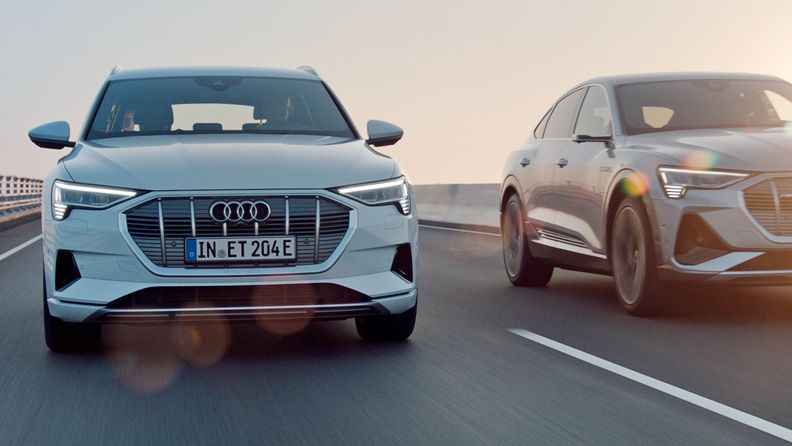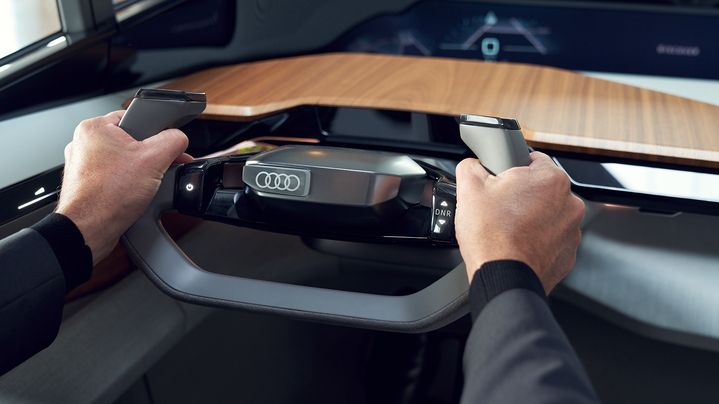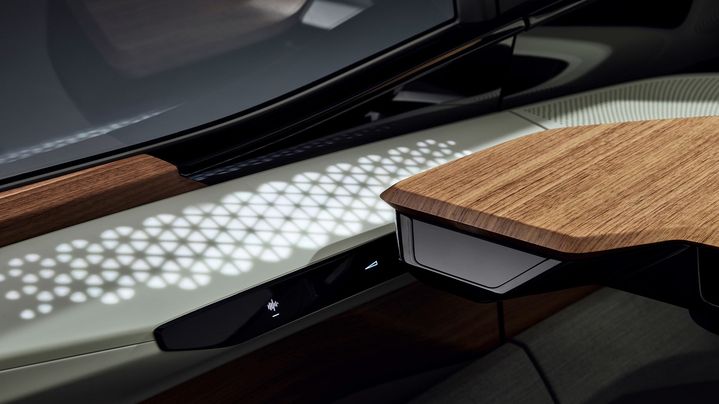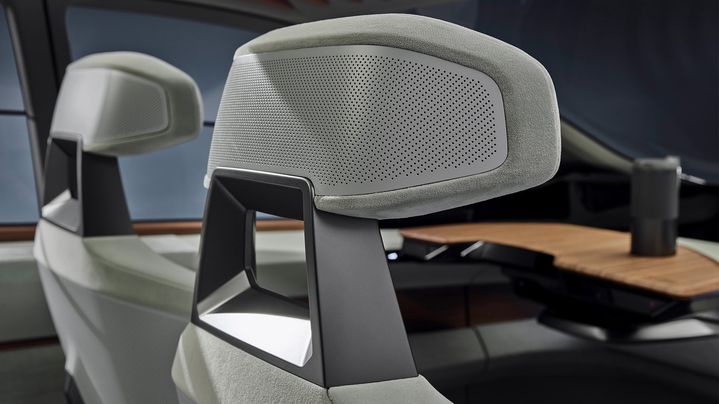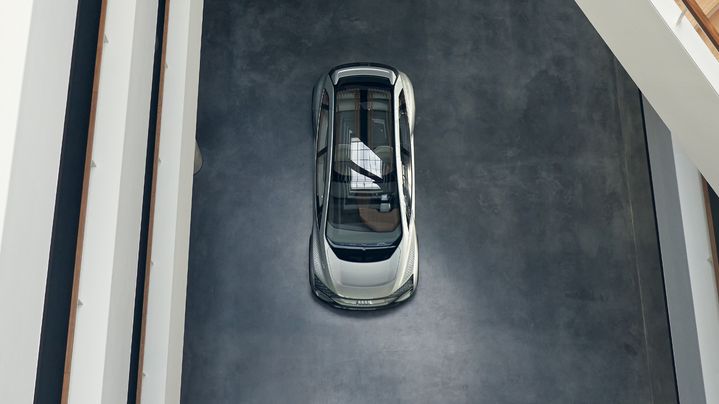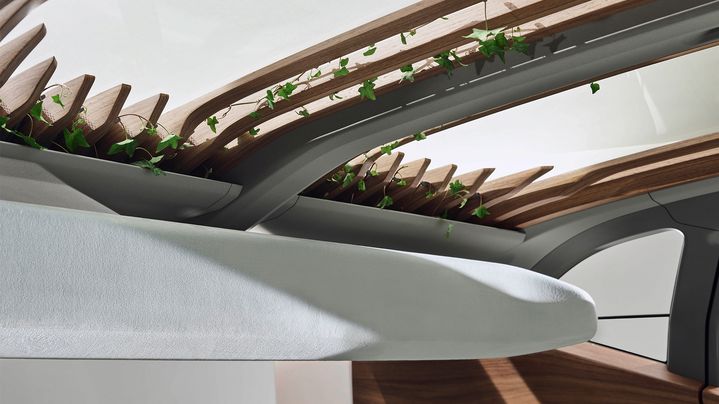Forward-looking: the Audi AI:ME
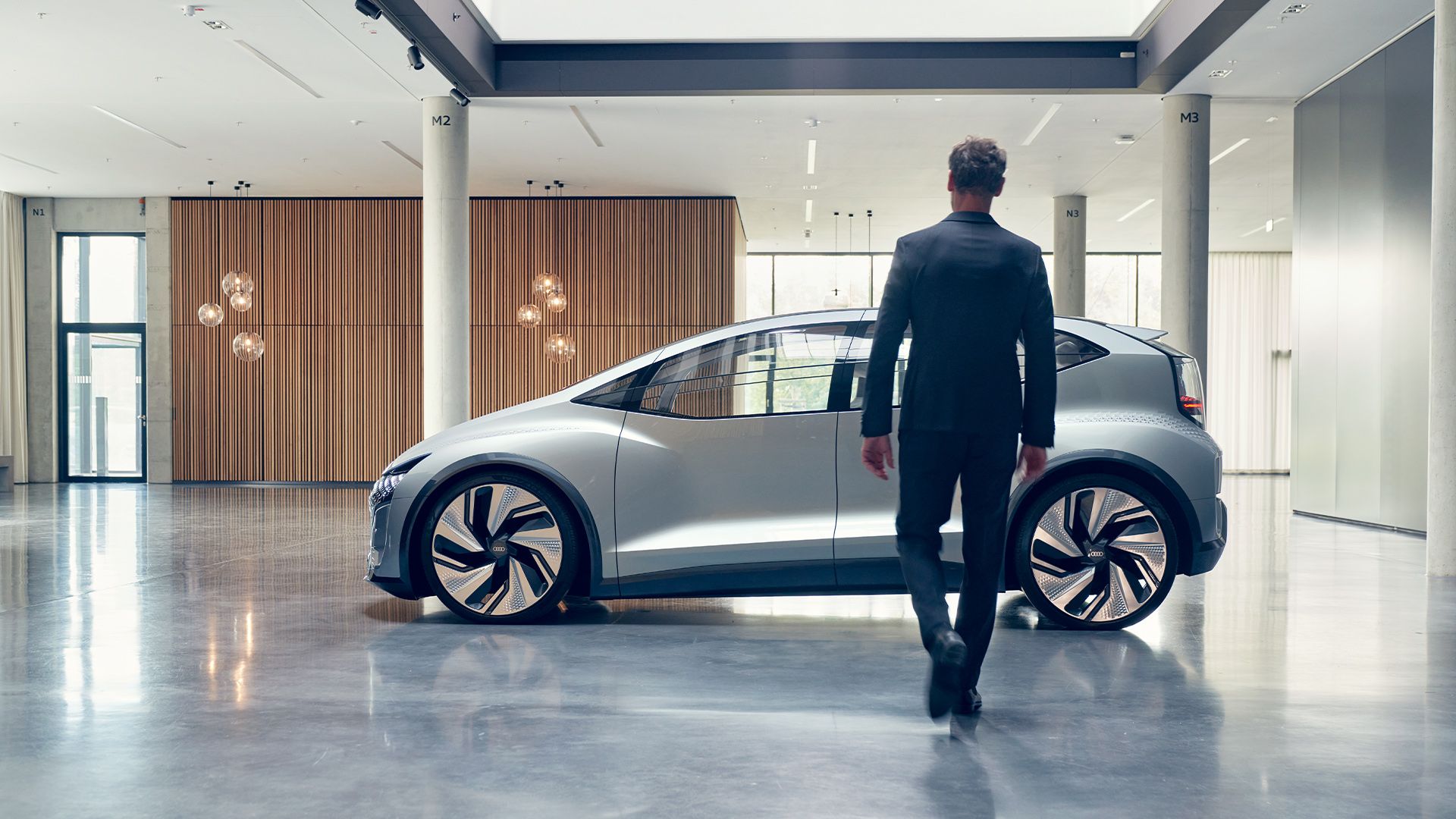
The way in which we move around is undergoing a transformation. As the determiner of shape, design plays an important role in this process. It builds the bridge between aesthetics and functionality. Alternative drive systems and innovative technologies are changing the requirements in this area. There is a greater focus on the interior, which has the potential to give the user more space. Electric mobility, among other things, is freeing up the space needed to create such concepts. That’s because the architecture of the electric drive system permits more interior volume than in vehicles with conventional drive systems.
A glimpse at the mobility of the future
Concept cars can be used to illustrate what this means for the future layout of the interior in concrete terms. They already provide a glimpse of the mobility of the future. The Audi AI:ME1 is one of these forward-looking ambassadors. It not only presents a design vision, but also shows the influence of artificial intelligence (AI) and machine-based learning on the mobility of the future.
The Audi AI:ME1 was designed to meet the needs of a city. It is configured like a “third living space” – which could occupy an important role alongside the home and workplace. During the design process, priority was given to the interior as the core of the concept car. Accordingly, the styling of the bodywork plays a subordinate role. There is less focus on the classic connection between driver and vehicle (steering wheel, instruments, pedals) and greater emphasis on the time spent in a concept car that drives in a highly automated way.1 The idea behind it all is to give people the opportunity to seclude themselves away from the urban hustle and bustle in the city of the future.
The “AI” in the name of the visionary vehicle represents a number of electrical systems developed by Audi that make life easier for the driver and provide new ways of spending time in the car. To this end, strategies and technologies from the field of AI and machine-based learning are being used. They make the highly automated driving possible as well as the complex interaction between the occupants and the vehicle. This should also be possible in production models in the future, but at its current level of complexity Audi AI can only be experienced in concept vehicles for the time being.
Highly automated driving
The Audi AI:ME1 is designed for use in the city and for highly automated driving at level 42. This is the second-highest level on a standardized international scale for increasing vehicle automation (SAE J3016). Although systems with level 42 no longer require any assistance on the part of the driver, their function is limited to a specific area – such as highways or specially designated city center areas. In such places, the driver can completely hand over the task of driving to the system. The driver will only take back control of the car when it leaves the area designated for highly automated driving (level 42). For this reason, the Audi AI:ME1 still has the traditional steering wheel and pedals. However, a little patience will be required before this technology takes to the road in production models – although we are continuing to work meticulously on advancing the technology3.
Some see a concept. We see potential.
Despite having the proportions of a city car, the Audi AI:ME1 is a modern place of refuge that offers plenty of space. Its comfortable, armchair-like seats are automatically set to the favorite stored position when the concept car1 is opened. The front seats can be rotated if necessary and tables can be set up in the center, allowing the occupants to relax and interact with one another.
Besides the classic driver mode, the Audi AI:ME1 also offers a highly automated driving option if required. Since nobody actually has to drive the vehicle any longer, the driver enjoys a new kind of freedom and becomes a passenger alongside the other occupants. This person can now also take part in conversations with no distractions. However, the potential of this newfound freedom is not limited to conversations, because it also provides the opportunity to reply to e-mails, read a magazine, or watch a movie, for example.
A high level of comfort is assured by the flexible layout of the interior. The classic control elements are retracted in an elegant choreography and are then virtually concealed by a glove compartment with a walnut surface, creating new storage spaces – and new possibilities.
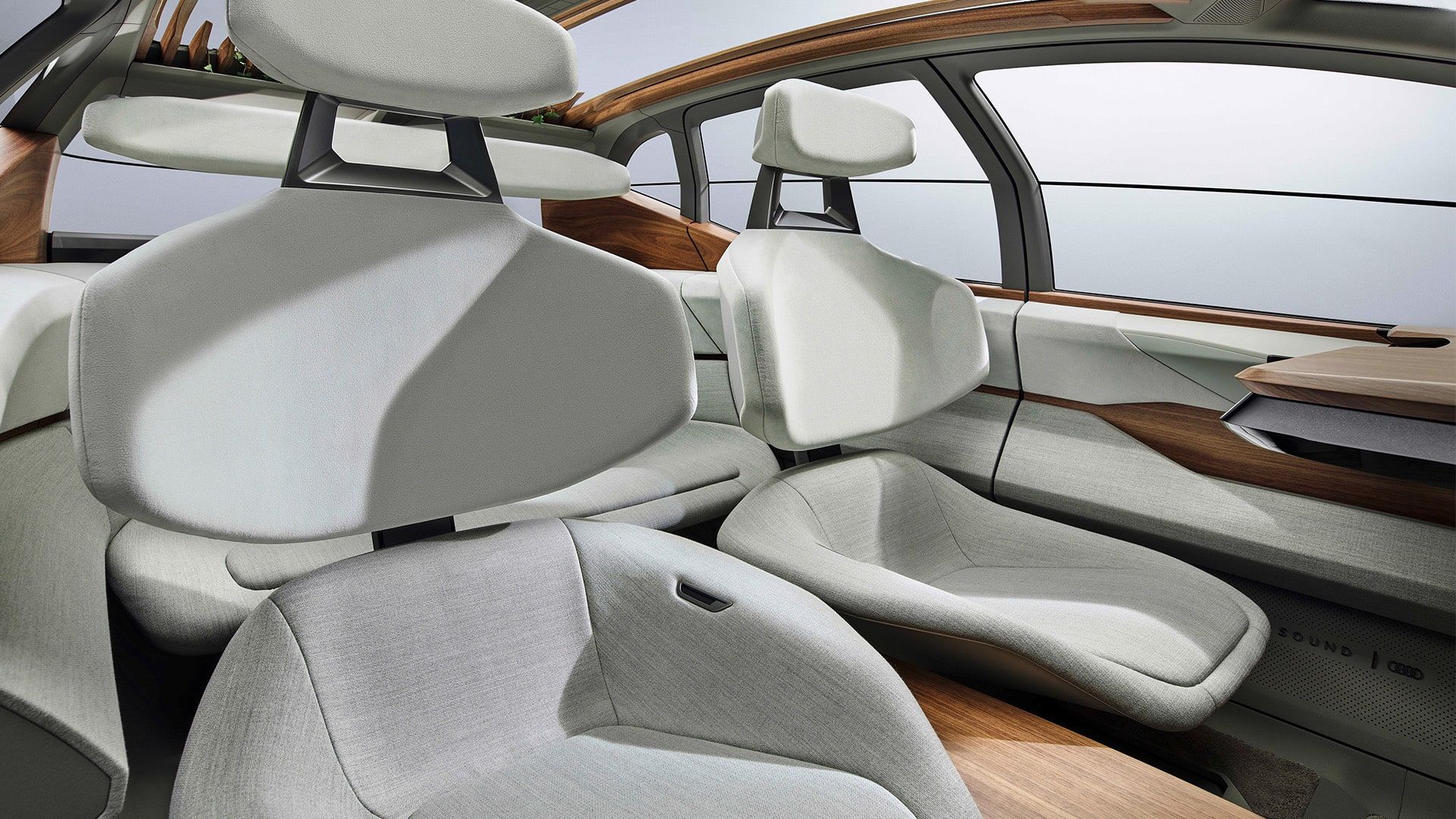
The interior creates an exclusive feeling of comfort
The Audi AI:ME1 also provides a glimpse of the functionality and user-friendliness of the future: A touch panel runs around almost the entire interior of the concept car1. It is not visible at first glance. The displays, which feature an eye-tracking system, only appear when touched or activated by voice command. The passenger can not only adjust the seat, temperature, or light settings from here, but also control the sound system, connect to the Internet, or get curated recommendations for places to eat or wellness tips. The audio system is coupled with noise compensation that can completely suppress the outside noise level by means of active noise control. This allows occupants to enjoy meditative silence or listen to music in concert-hall quality in the Audi AI:ME1.
High-quality textiles (some of which are made of recycled products), wood, and the touchpads in the door rails made of the mineral composite material Corian, which is highly pleasing to the touch, also generate a cozy atmosphere with a premium feel. And even real plants find a new home in the Audi AI:ME.1 They creep along the glazed roof and are set to bring a touch of nature to the city of the future – and improve the air quality inside the vehicle. An active air improvement system – like the one featured on the Audi AI:ME1 – is used to filter polluted urban air and could boost this effect.
Smart and forward-looking – the Audi AI:ME1 is more than just a state-of-the-art oasis of calm. It not only offers new perspectives with the view through the glass roof, but also provides a fascinating preview of the mobility of the future.
